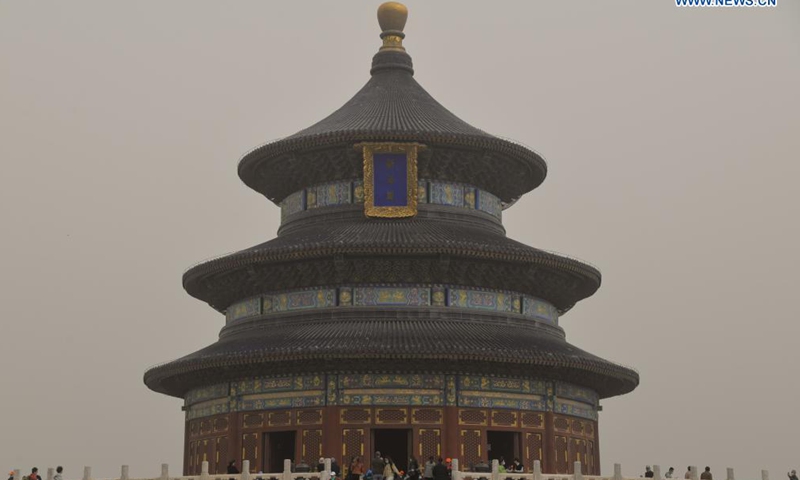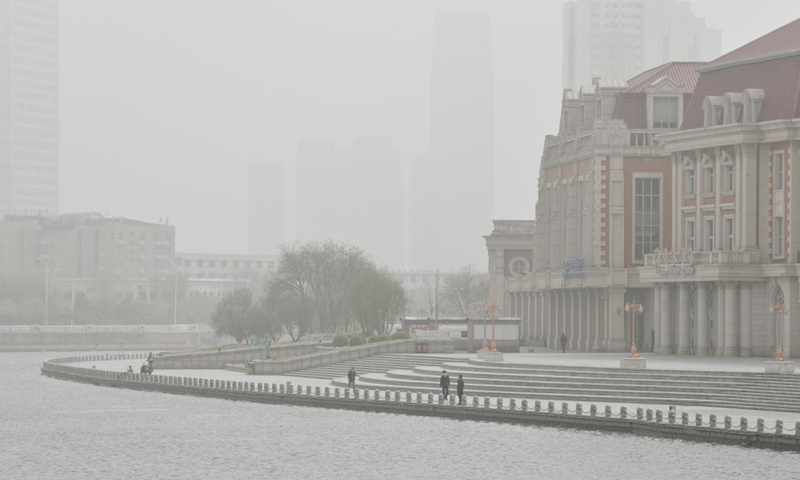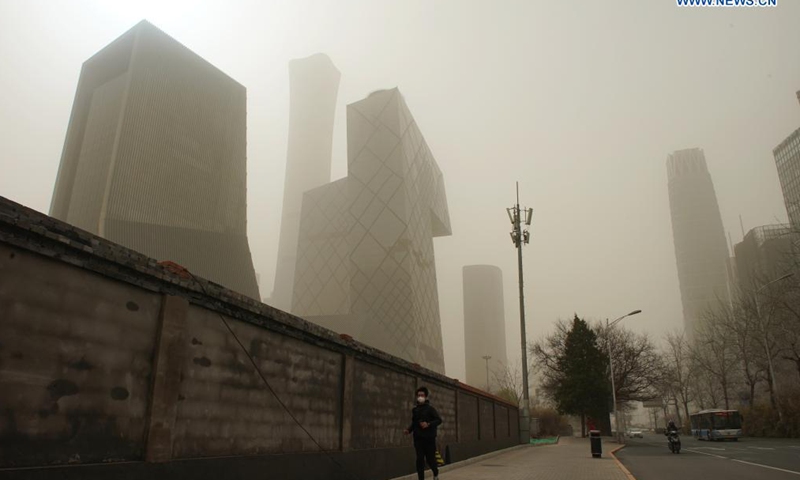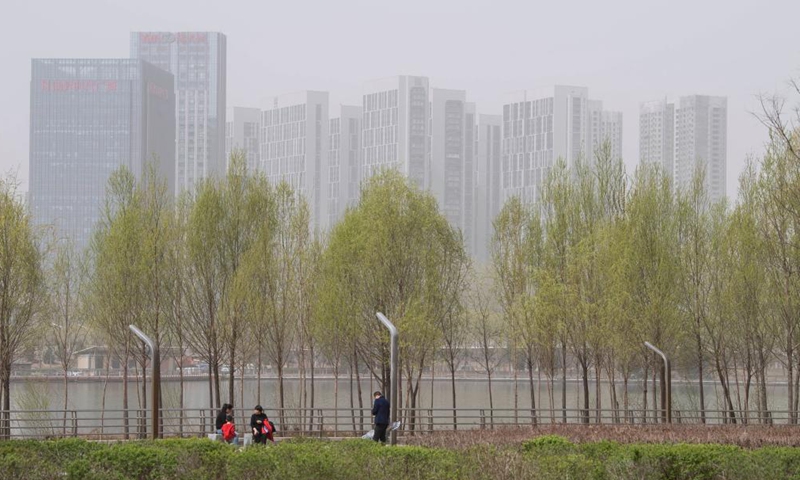
People visit the Temple of Heaven in Beijing, capital of China, March 28, 2021. (Xinhua)

Buildings are shrouded by sand storm in Tianjin, north China, March 28, 2021. (Xinhua)

A man walks on a road in Beijing, capital of China, March 28, 2021. (Xinhua)

People rest in a park in Taiyuan, capital of north China's Shanxi Province, March 28, 2021.(Xinhua)
The second sandstorm in two weeks hit Beijing on Sunday, dyeing the skyline yellow and plunging air quality readings to severely polluted.
The Chinese capital experienced strong winds on Sunday morning and visibility reduced to between 1 km and 2 km in most areas, according to Beijing's meteorological service.
Zhang Linna, chief forecaster at the municipal meteorological station, said the dusty weather, featuring strong winds and thick dust, will last more than 12 hours but its intensity will be slightly weaker than the sandstorm seen on March 15.
The Beijing Municipal Ecological and Environmental Monitoring Center said the sandstorm was blown southward into China after striking Mongolia between Friday and Saturday.
The sandstorm had already shrouded the entire city of Beijing by 7 a.m. on Sunday, with the PM 10 concentration surpassing 2,000 micrograms per cubic meter, according to the center.
It predicted that the air pollution will alleviate on Sunday evening as the sandstorm subsides.
Official data shows Beijing's sandstorm onslaughts peaked in the 1950s, when it recorded an average of 18 dusty days a year, but later subsided as afforestation in northern China picked up steam. In the first decade of the new century, the city logged an average of 0.6 dusty days per year.
Dusty weather was also observed in other parts of northern and northwestern China, including the Inner Mongolia Autonomous Region and the provinces of Gansu, Shanxi and Hebei.
Seven of the 11 cities in Shanxi Province hit the highest possible reading in the air quality index (AQI) on Sunday morning -- 500, which suggests hazardous air pollution, with PM 10 being the primary pollutant.
"It's like seeing through a yellow filter when you look out of the window," said Chen Junxiu, a resident of Taiyuan, capital of Shanxi. "There are much fewer morning exercisers and pedestrians outside."
She said her air purifier has been working at full steam for the entire morning after being switched to automatic mode.
The city of Taiyuan has ordered all construction sites to suspend outdoor operations and said that the cleaning of public spaces should be increased.
Li Xinsheng, chief forecaster at Shanxi's meteorological station, said that though shelterbelts have expanded in recent decades to reduce near-surface wind speeds and stave off desertification, they can do little to stop the cross-border migration of dust in the upper air. Enditem
